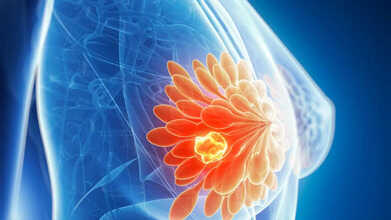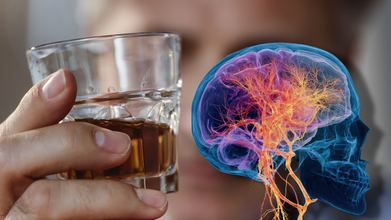- Health Conditions A-Z
- Health & Wellness
- Nutrition
- Fitness
- Health News
- Ayurveda
- Videos
- Medicine A-Z
- Parenting
- Web Stories
These Silent Habits Could Be Destroying Your Organs, According To Surgeon

(Credit-Canva)
We all make mistakes, however, not all of them can be fixed. Many times, things we thought were harmless could create a big mess for us. An orthopedic surgeon on Instagram listed 8 mistakes that we make that are harming our health.
Many things we do every day without thinking can actually cause serious damage to our bodies over time. Dr. Manan Vora, an orthopedic surgeon, recently shared advice on habits that quietly hurt our organs and what we should watch out for to stay healthy.
He points out that simple actions like mouth breathing, sitting too much, or listening to loud music can affect your health in big ways. Being aware of these habits and making small changes can help protect your organs and improve your overall well-being.
Lungs: Stop Mouth Breathing
Breathing through your mouth instead of your nose can dry out the important tubes in your lungs. This dry environment makes you more likely to catch colds and other infections. Over time, mouth breathing can cause long-term breathing problems and makes it harder for your body to get enough oxygen. Try to practice breathing through your nose.
Heart: Avoid Long Sitting Periods
When you sit down for many hours without moving, the blood flow in your body slows down a lot. This lack of movement forces your heart to work harder, putting extra stress on it over time. To protect your heart, you should set a timer and make sure to get up to stretch or take a short walk for a few minutes every single hour.
Eyes: Don't Rub Them
Rubbing your eyes might feel like a comfort when they itch or feel tired. However, this action can be harmful. Rubbing can easily introduce germs from your hands into your eyes, leading to infections. Worse, it can cause tiny scratches on the clear front part of your eye, which could lead to long-term vision problems.
Stomach: Slow Down Your Eating
If you eat your meals too quickly or constantly eat too much food, it can seriously upset your stomach and digestion. The stomach needs time to break down food efficiently. To help your stomach, make sure you chew your food properly, enjoy your meal slowly, and try to stick to smaller, more reasonable portions throughout the day.
Liver: Skip Heavy Late-Night Meals
Eating a big, rich meal right before you go to bed puts a huge workload on your liver while it should be resting. This nighttime feasting can also slow down your metabolism, making it harder for your body to process energy. It is much better for your liver if you finish your dinner at least two to three hours before you sleep.
Kidneys: Stay Hydrated
Your kidneys work hard to clean your blood, but they need enough water to do their job correctly. If you don't drink enough water and become dehydrated, it can cause severe strain on your kidneys. This dehydration also greatly increases your risk of developing painful kidney stones. Drink water consistently all day long to keep your kidneys healthy.
Brain: Focus on One Task
Doing several things at once, known as multitasking, might feel like you're getting more done, but it actually hurts your brain. Constantly switching your attention reduces your focus and makes your memory weaker over time. The expert suggests that you will be more productive and your thinking will improve if you focus all your attention on completing just one task before moving on to the next.
Ears: Lower the Volume
Regularly exposing your ears to very loud music, especially through headphones, can damage the delicate parts inside your ear. This is not temporary damage; it can lead to permanent hearing loss over time. To keep your hearing safe, always keep the volume at a moderate level and give your ears breaks from noise whenever possible.
Can A Fall Lead To Dementia? Major Study Finds That Head Injuries May Increase Risk By 69% And Calls For Urgent Prevention Measures

(Credit-Canva)
A seemingly simple fall can have far-reaching consequences, especially for older adults. New research from Canada tracking 260,000 seniors for 17 years (April 2004-March 2020) reveal a striking link between traumatic brain injuries (TBI) and a heightened risk of developing dementia, shedding light on how a single accident could accelerate cognitive decline.
Can Head Injuries Lead To Dementia?
The study found that older adults who suffered a TBI from any cause had a 69 percent higher risk of being diagnosed with dementia within the next five years compared to those who did not have a TBI. Even after five years, TBI sufferers still had a 56 percent higher risk of a dementia diagnosis.
While the study didn't look at falls specifically, falls are the most common reason for TBIs in older adults, causing an estimated 80 percent of cases.
Researchers emphasized that these falls are in fact preventable. They explained that by targeting fall-related TBIs, there is a huge potential that they can reduce TBI-associated dementia."
Why Do Head Injuries Cause Dementia?
The study authors did not give a specific reason for the link, but previous research suggests two main possibilities.
Direct damage: this suggests that the head injury itself—like bruising or bleeding in the brain can hurt brain cells. This damage might then cause abnormal proteins, which are strongly linked to dementia, to build up faster.
Pre-Existing Conditions: It is also possible that patients who suffer a fall or TBI already have undiagnosed dementia or Mild Cognitive Impairment (MCI). These conditions are known to make falls more likely, and the head trauma may then speed up the disease's progression.
Who Is More At Risk For Dementia Due To Injury?
The research revealed that the risk of dementia after a TBI is not the same for everyone:
Age and Gender
Women aged 75 years or older were found to be the most at risk of developing dementia after suffering a TBI. This may be because women tend to live longer and are more likely to suffer from conditions like muscle weakness or bone thinning (osteoporosis), which increase the risk of falls.
Overall Risk
Among people aged 85 years or older who suffered a TBI, about one in three eventually developed dementia.
Community
Patients who were older and lived in smaller communities and areas with low income and less ethnic diversity were the most likely to be admitted to a nursing home after a TBI.
Why Should We Pay More Attention To TBI?
According to the International Brain Injury Association, injuries to the brain are some of the most dangerous kinds of injuries a person can suffer. They are among the most likely to cause death or permanent disability.
In fact, brain injury is the leading cause of death and disability worldwide. It is also the main cause of long-term seizure disorders. Because of how serious these injuries are, the World Health Organization (WHO) started tracking them officially in 1993. Traumatic Brain Injury (TBI) is a major health issue in the United States every year. Today, an estimated 5.3 million Americans are living with disabilities caused by a TBI.
They emphasize that brain injury is a public health concern that requires continued research to find better medical treatments, as well as increased efforts to prevent the injuries from happening in the first place.
Breast Cancer Awareness: Identifying Breast Lumps—Cyst or Tumor?

Credits: Canva
Lumps can develop in breast tissue in people of all sexes and genders. If you notice a lump, whether you suspect it might be a cyst, a tumor, or something else, it is important to consult a doctor. While most breast lumps are not cancerous, some noncancerous lumps still need treatment, and only a medical professional can confirm whether a lump is cancerous or not.
To understand the difference, we spoke with Dr. Sumol Ratna, Assistant Professor in the Department of Medicine at NIIMS Medical College & Hospital.
Breast Cysts vs. Tumors
The most common types of breast lumps are cysts and tumors, and knowing the difference can help reduce worry. Dr. Ratna explains, “A breast cyst is a fluid-filled sac that forms within the breast tissue. These are usually non-cancerous and are most often seen in women between 30 and 50, especially after menopause.”
Cysts may appear as a single lump or multiple lumps of varying sizes. Depending on the amount of fluid inside, a cyst may feel soft or firm. Hormonal changes during the menstrual cycle can sometimes make them feel larger or slightly tender. Most of the time, cysts do not cause pain, although mild discomfort may occur at the lump site. Diagnosis is usually done via ultrasound, and if a cyst is found, a fine needle aspiration can confirm it contains fluid. Once drained, the cyst typically shrinks or disappears.
A breast tumor, on the other hand, is an abnormal growth of cells in the breast. Dr Ratna said, “Tumors may be benign or malignant. Benign tumors, such as fibroadenomas, are solid, well-defined, and do not spread to other parts of the body. Malignant tumors, however, are cancerous and can invade nearby tissues or organs.” Tumors are generally hard, irregularly shaped, and fixed in place. They may sometimes cause changes like skin dimpling or fluid from the nipple, but pain is usually not present.
Types of Breast Cysts
- Simple cysts: Completely filled with fluid, always noncancerous, with thin, smooth walls.
- Complex cysts: Have thick, irregular walls and may contain some solid mass or debris. Doctors may drain fluid to test for abnormalities and rule out cancer.
- Complicated cysts: Combine features of simple and complex cysts. They usually have thin, smooth walls but may contain small amounts of debris.
How Doctors Tell the Difference
Doctors use a range of tests to determine whether a tumor is benign or malignant. Cysts are generally smooth and movable, while tumors tend to be hard and fixed. Ultrasound is commonly used for diagnosing cysts, whereas tumors usually require mammograms and biopsies.
While both cysts and tumors can appear as single lumps, their characteristics and implications are very different. Any noticeable change in the breast shape, or discharge from the nipple, should prompt a visit to a breast specialist. Early evaluation is key to peace of mind and proper treatment.
Why It’s So Hard To Quit Alcohol: Scientists Discover The Brain Circuit That Fuels Addiction And Relapse

Alcohol addiction is a disease that plagues many people throughout the world. According to the World Health Organization, 209 million people in the world live with alcohol dependence. In 2024, the National Institute on Alcohol Abuse and Alcoholism (NIAAA) recorded that 27.9 million people aged 12+ had Alcohol Use Disorder (AUD) 775,000 youth (3.0%) and 27.1 million adults (10.3%) had AUD.
Alcohol has also been attributed to 2.6 million deaths in 2019. Addiction has cost many lives, however, despite knowing how bad alcohol is for not just their health, but their relationships, people still go back to it. Why? A new study may have found the answer to that.
What makes a person keep drinking alcohol, even when it harms their health and relationships?
A new study from Scripps Research offers a major clue. It shows that people often drink not for pleasure, but to escape the stress and misery of withdrawal. A tiny area in the brain is key to this learning process.
What Part Of The Brain Is Responsible For Relapse?
In a study published on August 5, 2025, researchers focused on a group of brain cells in rats located in a small, central area called the paraventricular nucleus of the thalamus (PVT).
The researchers found that the PVT area became much more active when the rats learned that drinking alcohol would make the awful feelings of withdrawal go away.
The problem people with alcohol dependency face is that this activity in the PVT drives a powerful urge to seek alcohol, leading to strong relapse behavior.
The researchers explained that the thing that makes addiction so hard to break is in the psychology, some people are not just chasing a high. They explain that many times these people are trying to get rid of powerful negative states, like the stress and anxiety of withdrawal.
Where Does Alcohol Addiction Stem From?
Millions of people struggle with alcohol use disorder, which often involves a difficult cycle: trying to quit, dealing with painful withdrawal, and then relapsing (starting to drink again). This study helps explain why the urge to relapse is so powerful. The study showed that the brain learns a powerful lesson: alcohol stops the pain.
Rats quickly learned that drinking gave them relief from the stressful, bad feelings of withdrawal.
This learning was so strong that they would try very hard to get alcohol—they kept seeking it out even if they had to overcome difficulties or faced punishment.
In every rat that learned this pattern, a tiny area of the brain called the PVT became highly active, or "lit up." This is the circuit that links alcohol to relief from stress. The PVT is already known to handle stress and anxiety, so it makes sense that it activates to escape the stress of withdrawal.
Can You Manipulate Your Brain To Not Relapse?
The findings are important for more than just alcohol addiction. The brain's drive to act in order to escape stress or pain is common in many human behaviors. The results could help treat other conditions, including:
- Anxiety disorders.
- Intense fear or learning to avoid things after trauma.
Researchers now plan to study women and look closely at the chemicals in the PVT area. If they can find the specific molecules involved in this escape learning, it could open new doors for creating better medications that target the brain's mechanism for avoiding pain, offering a new way to help people recover.
© 2024 Bennett, Coleman & Company Limited

